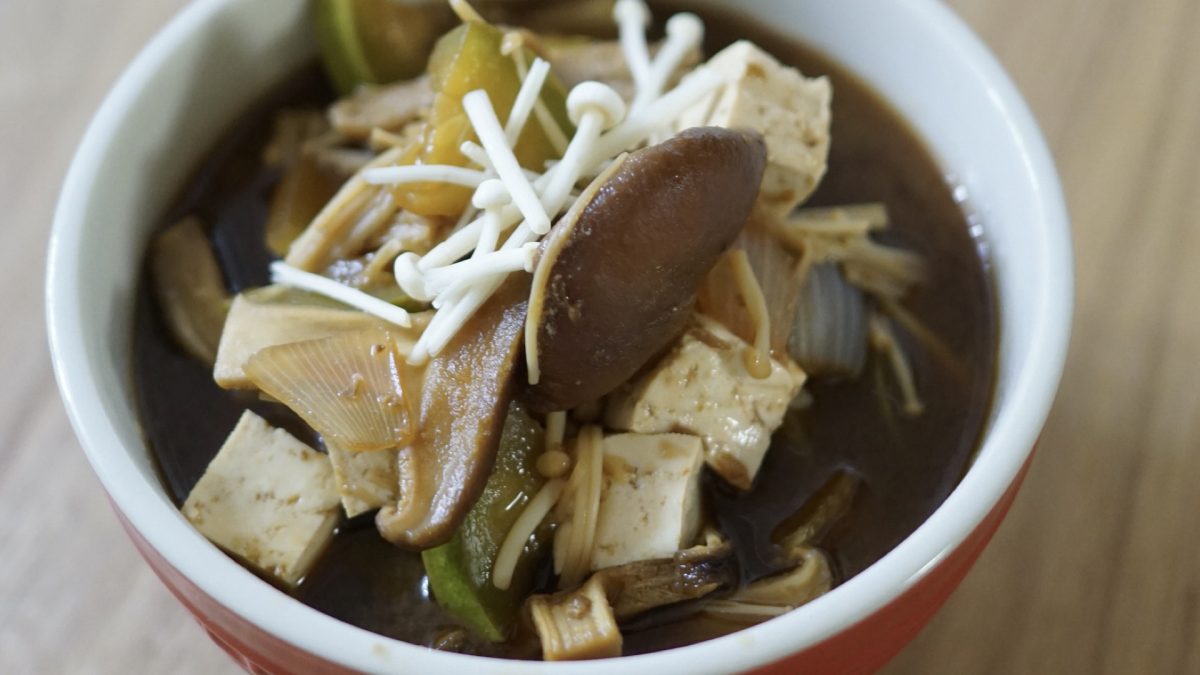According to the second World Cancer Research Fund/American Institute for Cancer Research expert report, “[s]alt is a probable cause of stomach cancer,” one of the world’s leading cancer killers. If the report’s estimate of an 8 percent increase in risk for every extra gram of salt a day is correct, then in a country like the United Kingdom, nearly 1,700 cases of stomach cancer happen every year just because of excess salt intake, as you can see at 0:27 in my video Is Miso Healthy?, and, in a country like the United States, it would be thousands more annually.
The risk of stomach cancer associated with salt intake appears on par with smoking or heavy alcohol use, but may only be half as bad as opium use or increased total meat consumption, as you can see at 0:43 in my video. These findings were based on a study of more than a half million people, which may explain why those eating meatless diets appear to have nearly two-thirds lower risk.
We know dietary salt intake is directly associated with the risk of stomach cancer, and the higher the intake, the higher the risk. A meta-analysis went one step further and looked at specific salt-rich foods: pickled foods, salted fish, processed meat, and miso soup. Habitual consumption of pickled foods, salted fish, and processed meat were each associated with about a 25 percent greater risk of stomach cancer. The pickled foods may explain why Korea, where the pickled cabbage dish kimchi is a staple, appears to have the highest stomach cancer rates in the world, as you can see at 1:39 in my video. But researchers found there was no significant association with the consumption of miso soup. This may be because the carcinogenic effects of the salt in miso soup are counteracted by the anti-carcinogenic effects of the soy, effectively canceling out the risk. And, if we made garlicky soup with some scallions thrown in, our cancer risk may drop even lower, as you can see at 2:06 in my video.
Cancer isn’t the primary reason people are told to avoid salt, though. What about miso soup and high blood pressure? Similar to the relationship between miso and cancer, the salt in miso pushes up our blood pressures, but miso’s soy protein may be relaxing them down. If we compare the effects of soy milk to cow’s milk, for example, and, to make it even more fair, compare soy milk to skim cow’s milk to avoid the saturated butter fat, soy milk can much more dramatically improve blood pressure among women with hypertension, as you can see at 2:43 in my video. But would the effect be dramatic enough to counter all the salt in miso? Japanese researchers decided to put it to the test.
For four years, they followed men and women in their 60s, who, at the start of the study, had normal blood pressure, to see who was more likely to be diagnosed with hypertension in that time: those who had two or more bowls of miso soup a day or those who had one or less. Two bowls a day may add a half teaspoon of salt to one’s daily diet, yet those who had two or more bowls of miso soup every day appeared to have five times lower risk of becoming hypertensive. So, maybe the anti-hypertensive effects of the soy in the miso exceed the hypertensive effects of the salt.
Indeed, miso paste, a whole soy food, can be used as a “green light” source of saltiness when cooking. That’s why I used it in my pesto recipe in How Not to Die and in my How Not to Die Cookbook. It can help you in Shaking the Salt Habit.
Not convinced that salt is bad for you? Check out these videos:
- High Blood Pressure May Be a Choice
- Sprinkling Doubt: Taking Sodium Skeptics with a Pinch of Salt
- The Evidence That Salt Raises Blood Pressure
- Sodium Skeptics Try to Shake Up the Salt Debate
- Sodium and Arterial Function: A-Salting Our Endothelium
Not convinced that soy is good for you? See:
In health,
Michael Greger, M.D.
PS: If you haven’t yet, you can subscribe to my free videos here and watch my live presentations:
- 2019: Evidence-Based Weight Loss
- 2016: How Not To Die: The Role of Diet in Preventing, Arresting, and Reversing Our Top 15 Killers
- 2015: Food as Medicine: Preventing and Treating the Most Dreaded Diseases with Diet
- 2014: From Table to Able: Combating Disabling Diseases with Food
- 2013: More Than an Apple a Day
- 2012: Uprooting the Leading Causes of Death
